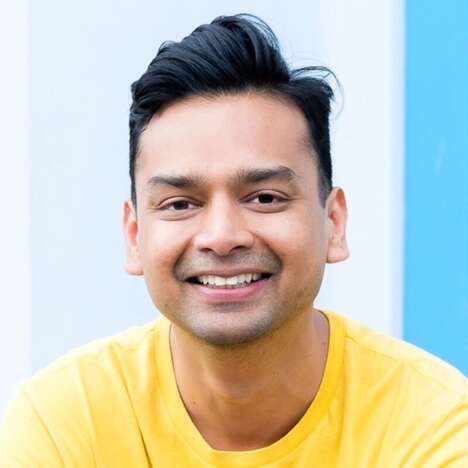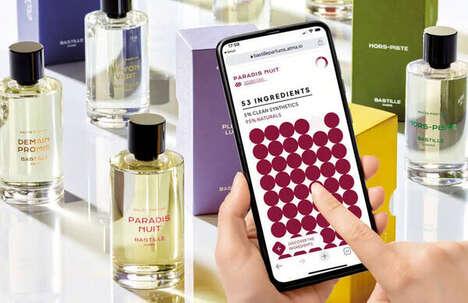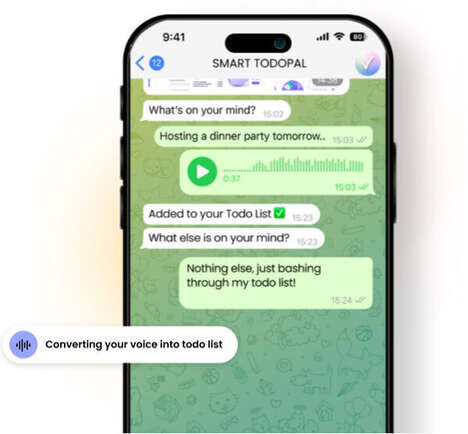The Innovation Mindset
An Interview with Raghav Agrawal, Fractional Product Manager at Seed PM
Related Trend Reports
AI, Boomers, Business, Lifestyle, Marketing, New Ventures, Social Business, Tech In this thought-provoking discussion, we explore the landscape of fintech innovation with Raghav Agrawal, founder of Seed PM and a seasoned Fractional Product Manager. With over a decade of experience in fintech and product management, including his work at the Royal Bank of Canada, Raghav has partnered with tech companies and startups to drive impactful change. He shares his perspective on balancing disruptive innovation with incremental improvements, overcoming organizational inertia, and fostering a culture of calculated risk-taking. His practical yet transformative approach to innovation, including the role of AI and the importance of embracing failure as a learning tool, offers valuable insights for companies striving to stay ahead in the fast-paced world of financial technology.
In this thought-provoking discussion, we explore the landscape of fintech innovation with Raghav Agrawal, founder of Seed PM and a seasoned Fractional Product Manager. With over a decade of experience in fintech and product management, including his work at the Royal Bank of Canada, Raghav has partnered with tech companies and startups to drive impactful change. He shares his perspective on balancing disruptive innovation with incremental improvements, overcoming organizational inertia, and fostering a culture of calculated risk-taking. His practical yet transformative approach to innovation, including the role of AI and the importance of embracing failure as a learning tool, offers valuable insights for companies striving to stay ahead in the fast-paced world of financial technology.1. Tell us your name and a little bit about your role at Seed PM.
My name is Raghav Agrawal. I’ve spent over a decade working in fintech and product management, leading innovations in mobile experiences, payments, blockchain, and AI. Now, I run Seed PM, where I help fintech founders with fractional product management to achieve product-market fit and scale their product teams. I also mentor fintech startups and product managers.
2. How are you enjoying the Future Festival so far?
It's been great! A former colleague recommended it to me, saying the energy here is something special - and I can definitely feel that. I really like how it focuses on timely topics like AI, and most of the speakers are offering practical examples and tools that people can actually use.
3. What's been your favorite keynote?
I really enjoyed Sean's talk. It was refreshing to see him break down the often mysterious world of AI implementation. He gave the audience some really practical and nuanced advice on how to adopt AI in their own fields.
4. What do you think your biggest takeaway has been?
2024 has really been the year of AI adoption. My biggest takeaway is that companies need to stop staying in the shadows. A lot of my clients see 'AI' as this confusing umbrella term, which holds them back from fully diving in. The conversation needs to shift from 'are we implementing AI?' to 'how effectively can we use it?'. As we head into 2025, using AI is becoming the new standard.
5. What does innovation mean to you?
Broadly speaking, I think of innovation in two ways: big ‘I’ innovation and small ‘i’ innovation.
Big 'I’ innovation is the kind that dramatically changes how we interact with technology. Take the iPhone, for example - it completely changed how we use technology. Another good example is ChatGPT, which has changed how we interact with information.
Small 'i' innovation, on the other hand, is often overlooked. It's about making iterative changes in how we do things. Like using Natural Language Processing (NLP) to better understand customer questions in a chat session.
There's a lot of opportunity for companies to innovate in that small 'i' space, and I think it deserves more attention. At the end of the day, I think of innovation as any advancement in technology that makes our lives easier.
6. How does your team generate new ideas?
When I work with clients to help them generate new ideas, I like to segment ideas as 'Outside' and 'Inside'.
'Outside' ideas come from looking at the industry - things like competition, regulators, and other stakeholders. You ask questions like: How can I differentiate better? What external threats / opportunities does the business face?
'Inside' ideas are all about focusing on your own company and customers. You ask questions like: What customer needs are going unmet? What can we do better to serve them?
There are two important things to keep in mind:
First, if you're in a regulated industry, regulatory changes can actually inspire new ideas. Sometimes those changes are inevitable, so getting ahead of them and seeing them as opportunities can spark innovation.
Second, when thinking about customers, I always remember that famous quote attributed to Henry Ford: 'If I had asked people what they wanted, they would have said faster horses.' It reminds us that while people know their problems, they don’t always know the solutions.
7. Do you have any specific rituals for resetting your team to be creative?
I'm a big fan of Design Thinking. I like to put my clients' teams in their customers' shoes to build greater empathy.
For example, if we're looking to improve the customer onboarding process, I’ll map out the customer onboarding journey. During brainstorming sessions, I have team members switch roles - Engineers trade places with UX folks, Product with Sales, and so on. Getting them out of their comfort zone and helping them see things from the customer’s perspective has been really effective.
8. How do you identify trends? What resources does your team use to spot trends and consumer insights?
At the core, I believe in 'being where your customer is.' My advice to clients is simple: if your customer is on TikTok, you should be on TikTok. If they're still reading newspapers, then read newspapers. You have to understand trends within the context of your customer’s world.
For broader market trends, industry research reports are a good starting point. But when it comes to trends specific to your customer base, no one knows them better than you. Pick a starting point based on market signals, but ultimately you have to take a hypothesis-driven, test-and-learn approach to get to real insights.
9. What is the biggest challenge you face when innovating?
Inertia is the biggest challenge I’ve faced when trying to innovate with clients. It could be internal - within their teams - or external, coming from the industry.
Once you have ideas to innovate on, the next step is to start experimenting with a hypothesis-driven approach. As you go, you’ll need to balance the classic trio of Time, Cost, and Quality. These three pillars are always in play, and in a finite world, you can't maximize all of them at once.
For example, you can innovate quickly and with high quality, but that will likely come with high costs. These pillars help you prioritize and become essential allies as you work to innovate.
10. What makes an innovative culture? How do you create a culture of innovation?
There are a few different ways to answer this.
In my experience, it comes down to two key questions: Are you comfortable taking risks, and do you forgive failure?
Being honest about these questions is critical because innovation often leads to financial losses, at least in the short term. Depending on your organization’s goals, that might be acceptable—or it might not be. You also need the right kind of people with a growth mindset. Ultimately, it’s about rewarding risk-taking and being okay with failure.
You can see this approach in action with large innovative companies like Google. They spend billions on multiple projects, most of which might not produce anything tangible, but one of those ideas could propel them into their next big leap in innovation.
References: seedpm


